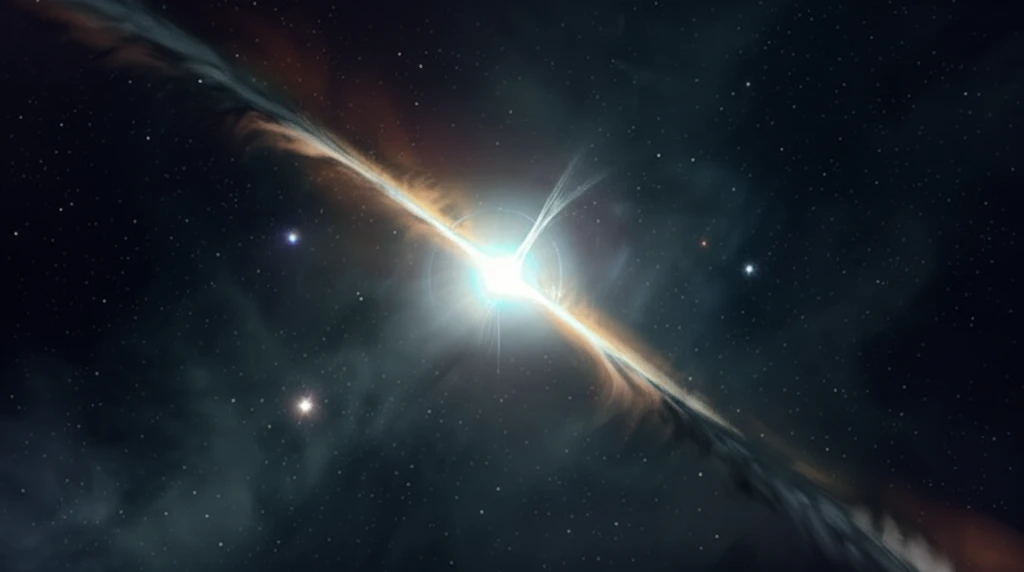
Cosmic Distance Puzzle: Scientists Refine Redshift Estimation for Blazar PKS 0447-439
"New analysis of gamma-ray emissions sheds light on the contested distance to a bright blazar, offering a clearer view of the universe's far reaches and the extreme physics at play within these celestial objects."
Blazars, a class of active galactic nuclei (AGN), are among the most energetic and enigmatic objects in the universe. These celestial powerhouses emit intense radiation across the electromagnetic spectrum, thanks to relativistic jets pointed almost directly at Earth. These jets, powered by supermassive black holes at the centers of galaxies, accelerate particles to near-light speed, producing the dazzling displays of light that scientists observe.
One of the key challenges in studying blazars is determining their distance, or redshift. Redshift is a measure of how much the light from an object has been stretched due to the expansion of the universe; the higher the redshift, the farther away the object. Accurate redshift measurements are crucial for understanding a blazar's intrinsic luminosity, its place in the cosmic timeline, and the physical processes occurring within its jets. However, blazars often present a problem: their spectra can be featureless, making traditional redshift determination methods unreliable. This is where innovative techniques come into play.
In a recent study, a team of astronomers tackled this challenge by focusing on PKS 0447-439, a bright blazar whose redshift has been a matter of debate. By analyzing the blazar's gamma-ray emissions at both GeV (gigaelectronvolt) and TeV (teraelectronvolt) energies, the researchers have provided a new estimate of its redshift, shedding light on its true distance and the environment it inhabits.
Unlocking Cosmic Distances with Gamma Rays: A Novel Approach

The research team, led by E. Prandini, G. Bonnoli, and F. Tavecchio, employed a sophisticated method that leverages the interaction between high-energy gamma rays and the extragalactic background light (EBL). The EBL is a diffuse sea of photons permeating the universe, the accumulated radiation from all stars and galaxies throughout cosmic history. When TeV gamma rays from a blazar travel through space, they can collide with EBL photons, resulting in their absorption. This absorption is energy-dependent and redshift-dependent, meaning that the higher the redshift (and thus the greater the distance), the more absorption occurs, especially at higher energies.
- EBL Interaction: TeV gamma rays interact with EBL photons, causing absorption.
- Energy Dependence: Absorption increases with energy and distance.
- Redshift Inference: Spectrum analysis reveals absorption, estimating redshift.
- Application: Useful for blazars with unclear spectroscopic features.
A Step Forward in Understanding the Universe
This research not only refines our understanding of PKS 0447-439 but also provides a valuable tool for studying other distant blazars. By leveraging the unique properties of gamma-ray emissions and their interaction with the EBL, astronomers can overcome the limitations of traditional methods and gain new insights into the vast and complex universe.
